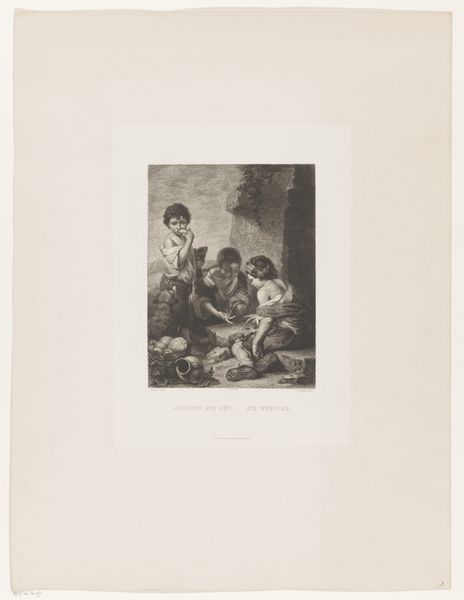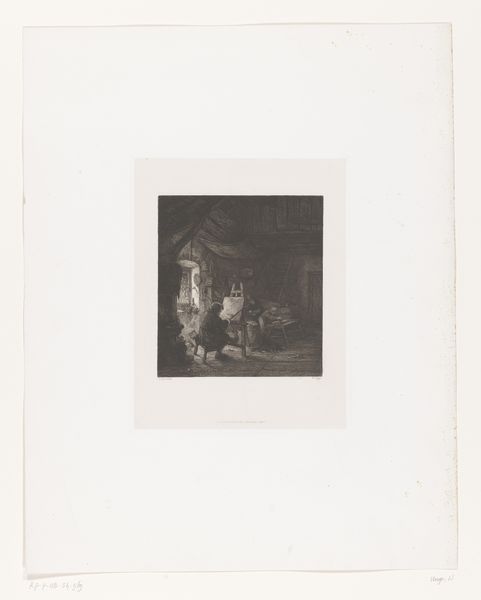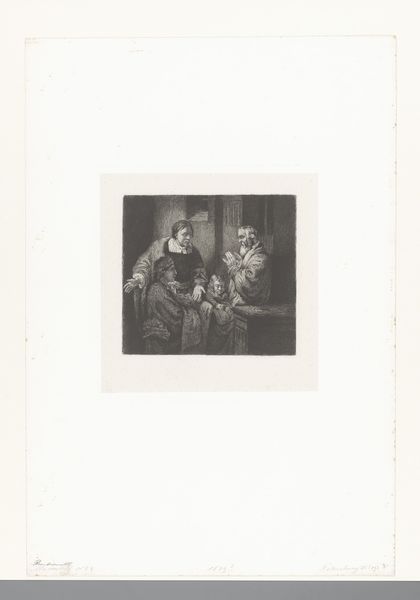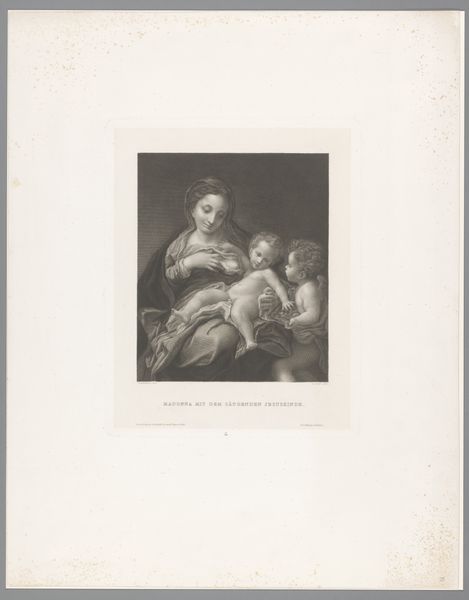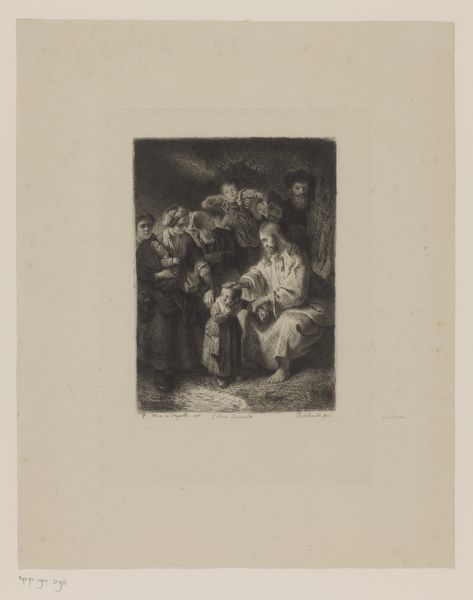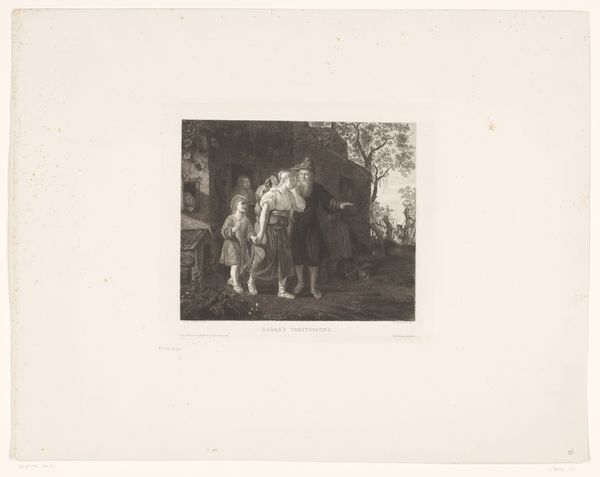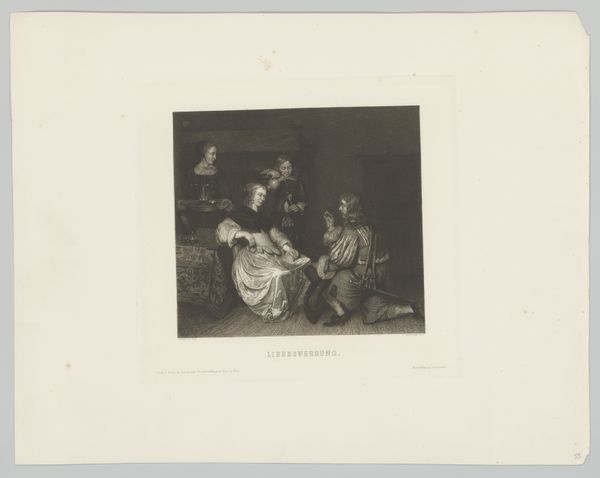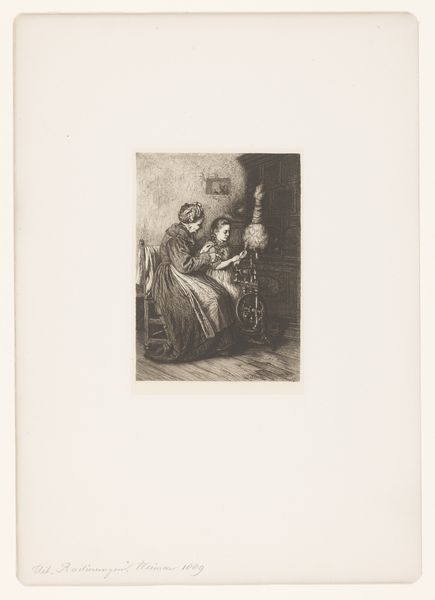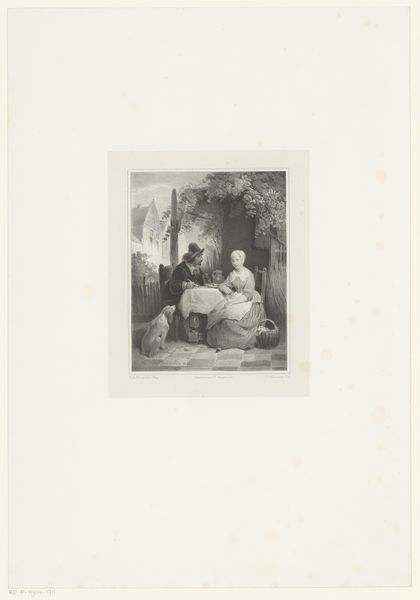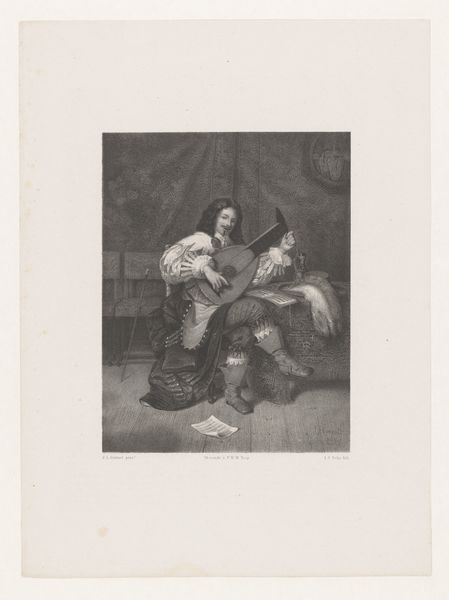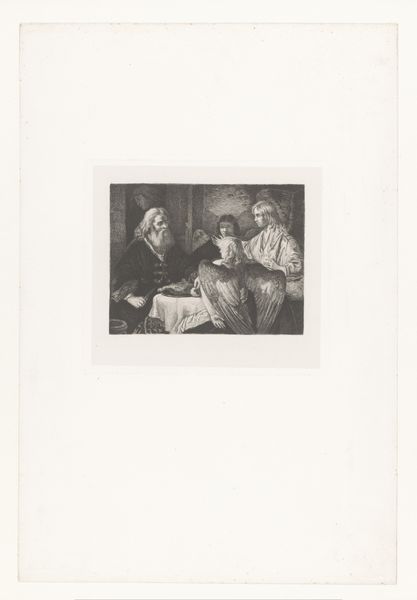
print, engraving
# print
#
figuration
#
history-painting
#
academic-art
#
engraving
Dimensions: height 340 mm, width 255 mm
Copyright: Rijks Museum: Open Domain
Curator: Here, in this print titled "Salome Receives the Head of Saint John the Baptist," made between 1847 and 1889, William Unger offers us a chilling scene rendered with incredible detail. Editor: Chilling indeed! Even in monochrome, the severity of the moment just… radiates. You can almost feel the weight of that head on the platter, and the queen's detached gaze is almost comical in its coldness. Curator: Unger worked in engraving, so his process involves meticulously cutting lines into a metal plate, lines which hold ink. Notice how he used that technique to capture not just textures, but also these nuances of expression. Editor: Yes, but consider the social dynamics at play. Engraving at this time…it’s labor-intensive. How much collaboration existed between Unger and skilled artisans who were instrumental in translating his vision? To what extent is this print itself a commentary on the societal structures of the time? The luxury of Salome and the grim work on display are really telling. Curator: That's a fascinating perspective, grounding the artwork in its historical making. The theatrical drama pulls me in—Salome’s story, with her infamous request, touches upon themes of power, desire, and faith—don’t you think Unger managed to grasp them, to pull those big feelings into a stark image? Editor: Power, yes. But isn't it all performative? This image only makes me question how much agency any of these people truly have within the symbolic and literal machinery of their time. Are they puppeteers, or just puppets themselves, acting out pre-ordained roles in a grand historical tableau? Curator: Ah, the eternal question! Regardless, looking at this print reminds me of how artists continually revisit these core stories, reworking them for new times, reflecting the eternal conflicts in new material guises. Editor: For me, thinking about this piece sparks so many connections, considering not just the end result, but the hands, materials, and forces—often unseen—that brought it into being. The stark beauty really lies in how the piece invites us to ask.
Comments
No comments
Be the first to comment and join the conversation on the ultimate creative platform.
